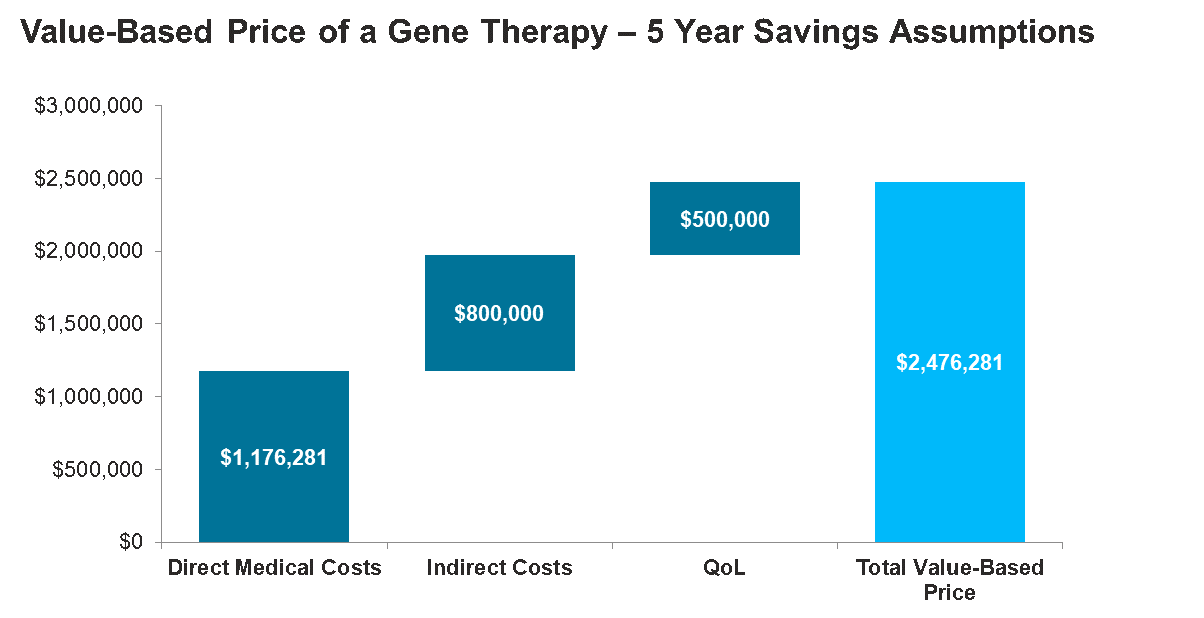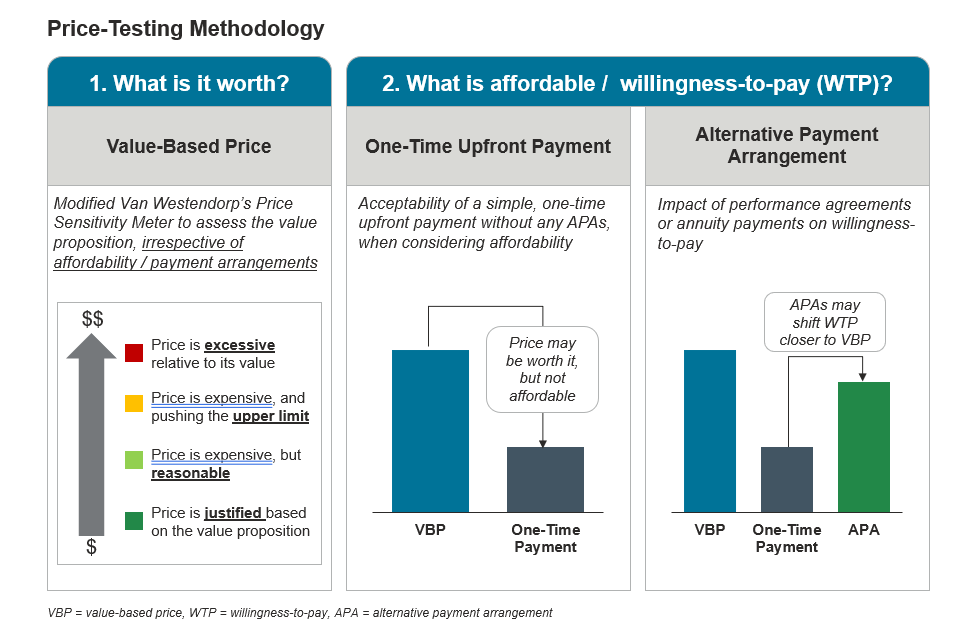Case Study: Global Pricing & Market Access Strategy for a Rare Disease Gene Therapy
Project Objective
A biopharmaceutical company was developing the first gene therapy for a rare disease. It was expected to be a one-time therapy that would replace the current chronic standard of care
As gene therapies are typically very expensive, the client was aware that payers may have significant affordability concerns, particularly if a single up-front payment was required
Therefore, the client asked Windrose to evaluate the potential price and market access opportunities for the gene therapy, and to explore whether payer willingness-to-pay would differ if alternative payment arrangements such as annuity models were considered
Windrose Approach
View fullsize

Gene Therapy Value-Based Price Construct

Price Testing Methodology
First, we determined all of the potential value drivers for the gene therapy, based on the economic, clinical and humanistic benefits relative to standard of care; this allows us to conduct a calculation of the cost savings and quality of life gains to directionally determine the “value-based price” of the gene therapy
Next, we conducted primary payer and key opinion leader research across the US and eight ex-US markets to assess price, access and reimbursement potential for the gene therapy, as well as likely product positioning
As part of this, we used a robust pricing framework to evaluate affordability of the gene therapy, including considering how alternative payment models or access strategies would affect price potential
Impact
We established both the value-based price and payer willingness-to-pay for the gene therapy across markets
We provided recommendations to the client to optimize price and access for the gene therapy, including how payment models (up-front vs. annuity, vs. performance-based) would affect price potential
The final recommendations were well received by the client and helped them form a strategy to support product launch across markets

